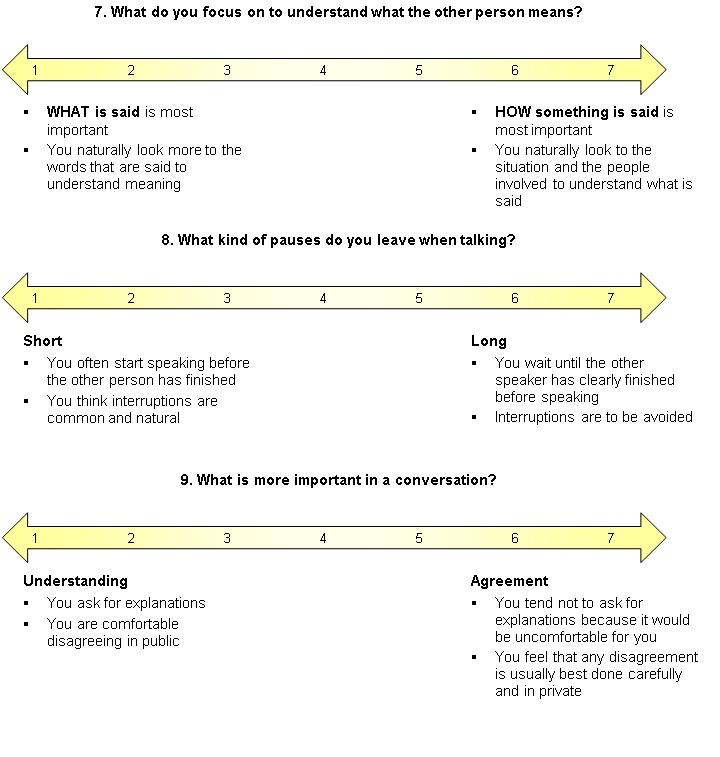Cultural Differences in the Way we Listen
In our previous blogs we examined how cultural differences impact body language and the way we speak - we now turn our attention to a little-known skill we all have yet many forget to utilise!
Listening.
Just as cultures differ in how we hold ourselves, use our eyes or communicate, cultures also differ in the way they respond to what is being said.
How we listen to information, how we process it, what we focus on and how we believe we are expected to react and/or respond to all come from our own unique cultural conditioning.
This conditioning can be the result of all sorts of things from your gender to nationality to town or village and 10s of other potentially influencing factors such as peer group or religious beliefs. However, despite individual differences, it is possible to make general observations about certain cultures and their preferences or habits.
Examples of areas where cultures differ in listening are in
- the focus we place of communication,
- the use of pauses or silence and
- the end goal of any conversation.
Some cultures focus on the context as opposed to the words someone is using - they may be deciphering body language, gestures, energy, eye movements and all sorts of subtle coding in order to understand what the person is telling them.
Other cultures, where non-verbal communication is less important, tend to "say what they mean" and keep it simple.
Here are a few examples of how listening can vary across cultures.
DON'T MISS THE FREE DOWNLOAD AT THE END!
What is the main focus of communication?
- On what is said: Germany, Sweden and other cultures in Nordic and Germanic Europe.
- On how it is said: much of Asia and the Arab world
Are long or short pauses normal?
- Short Pauses: Greece, Spain and Italy
- Long Pauses: Japan and the Nordic countries
- In between: Cultures that tend to be uncomfortable with silence but that have less overlap when speaking include Northern Europe and the USA.
What is most important in conversation?
- Understanding: Australia, the US, Germany, France, Ireland and the Netherlands
- Agreement: the Arab world and much of Asia, including South Korea, Japan and China, as these cultures tend to be more focused on creating and preserving strong relationships
Culture Is Not That Simple
It is important to remember that not everyone from a culture is going to conform to a particular generalisation.
We only make generalisations about cultures based on research pertaining to traits, values and behaviours.
Every person is an individual and needs to be treated as such. Generalisations simply help us understand the cultural climate we might be working in. Treat everyone the same - i.e. differently.
Try it Out - DIY Cultural Training
First you will need to find a partner who is just as keen as you to try this out.
Both of you should have a read of the list below and plot where you think you stand on the spectrum. Try to be as honest as possible with yourself rather than plotting yourself where you would like to be.
Then ask one another where you would place each other and discuss any differences you might find. Why could those be?

With your partner have a short conversation about what you did last weekend or any other topic that is going to be easy to chat about.
Challenge each other by changing your normal speaking styles and use shorter or longer pauses. How does this affect your conversation? How does it make you feel? Why?
Ask Yourself
Were you told as a child, “Don’t interrupt!”? Were you encouraged to ask for clarification in school with phrases like, “Any questions?” and “Is that clear?” If you heard the first example often, you were most likely raised in a culture that tried to limit the number of interruptions in conversation. If you were taught to ask questions, you may tend toward understanding than agreement.
How long until your ‘silence-meter’ runs out? Are you comfortable with relatively long periods of silence, or are you quick to fill silences with words?
How does the relationship of speakers change your priorities in a conversation? When are you more likely to value understanding and clarity? When are you more likely to focus on agreement?
Download our Self-Study Guide to Cultural Differences
If you are interested in learning more about communication and culture, we recommend you download our free self-study guide to cross cultural communication.
We hope you have enjoyed our brief guide to cultural differences in the way we listen.
Help us by sharing this blog so as many people as possible can start learning about cultural differences!
Photo by Nick Fewings on Unsplash
Related Posts
By accepting you will be accessing a service provided by a third-party external to https://www.commisceo-global.com/

 +44 0330 027 0207 or +1 (818) 532-6908
+44 0330 027 0207 or +1 (818) 532-6908
